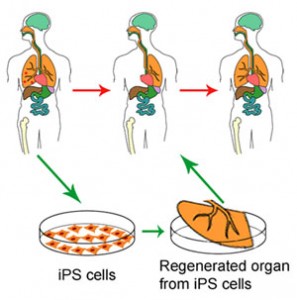Comparing two cellular reprogramming methods from one donor's cells yields good news for iPSCs

Humans are destined to be growing old. This is how the cycle of
nature revolves to make way to introduce another cycle of life. Although we
cannot influence any factors of aging to overcome it, yet adult stem cells constituting
our bodies can be influenced or rejuvenated using transcription factors to emerge
as different cell types called pluripotency. With the introduction of iPSCs, they
have been able to remove the ethical concerns related to embryonic stem cells in
the field of regenerative medicines and different drug therapies. In addition, induced
pluripotent stem cells after its discovery have opened up new avenues to be
used as a disease modeling.
Uses of
iPSCs
In 1998, embryonic stem cells were thought to be used widely for
the treatment of intractable diseases such as spinal cord injuries and Parkinson’s
disease. And everything was ready for the clinical trials using ESCs, but there
had been a huge concern over its acceptance, and its uses were stopped from any
clinical trials. This is where iPSCs came into the picture, replacing the need
of human ESCs to be used as a great source of the clinical research tool. In
the year 2007, the iPSCs were able to show its potential capabilities of treating
genetic blood disorder known as sickle-cell anemia in a mouse model. Using the homologous
gene correction technique in mutated iPSCs, the disease of the donor mouse was
cured.
This is just one example of how iPSCs can be used for various
medical applications and stem cell therapies. Due to their pluripotency
potential, scientists are always elated that iPSCs can differentiate into any
cell types, and a number of illnesses such as Alzheimer’s disease,
cardiovascular disease, and spinal cord injuries can be addressed quite easily
with the best outcomes through clinical trials.
Concern
over iPSCs
But still, iPSCs do not advocate for complete trustworthiness
in compliance with the embryonic stem cells. Although iPSCs can be manipulated
to retain features as similar as ES cells state like, they lack some key features,
resembling those ESCs. iPSCs follow the epigenetic
behavior (modification of DNA structure) even after they reprogram the cells
completely and retain their memory in their cells. So, a produced product using
iPSCs cannot achieve 100% result and accuracy with that epigenetic memory in
their cells as ESCs do normally.
However, there is still a silver lining at the end of the
tunnel. A recent study proves to remove this hurdle.
And all this is possible due to the SNCT or somatic cell
nuclear transfer- a type of reprogramming technique. This technique is helpful
to make a comparison between iPSC derived stem cells and embryonic stem cells
to find their genetic and cell functions. The study was carried out by the
Stanford University and Shoukhrat Mitalipov at Oregon Health and Science
University. The comparison was concentrated to highlight if the cells generated
from the same donor contain any genetic differences. In order to do so, ESCs
were developed using SCNT or somatic cell nuclear transfer technique.
Execution
Of The Whole Procedure
An egg without its nucleus received a nucleus from an adult
cell using an SCNT technique. This transformed the cells into an embryonic state
like cell- which later becomes to be known as NT-ESCs.
The study took a specimen of skin to produce iPSCs, and the cell nucleus collected from the same donor to make NT-ESCs. If you see through a scientific glass, both iPSCs and SCNT comprise the same genotypes.
The study took a specimen of skin to produce iPSCs, and the cell nucleus collected from the same donor to make NT-ESCs. If you see through a scientific glass, both iPSCs and SCNT comprise the same genotypes.
The study proves that NT-ESCs do not carry any characteristic
of epigenetic memory of the original cells. However, the biggest hurdle appears
to be enough financial resources and donors of the cells.
Whatever, since the SCNT technique is able to remove that
epigenetic memory from the cells, we don’t need to worry too much over iPSCs functions.
We can hope the hurdle will be removed soon to pave the way for more clinical
advances.


No comments: